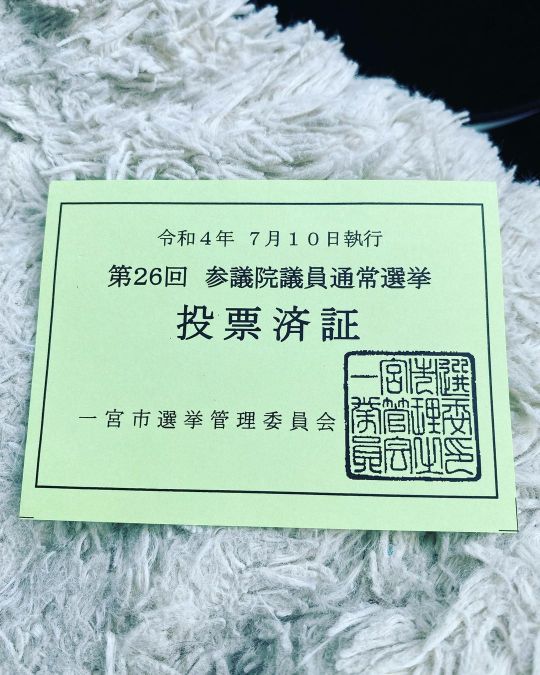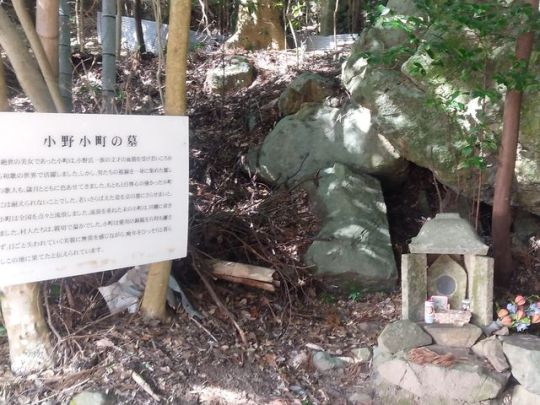#文句
Text

健太郎居候過去に人工大理石加工及びマンション向けシステムキッチン製作全般に取り組んでました。深夜にも及んだ厳しい特訓を受けられましたが、製品受注者減少による人員削減受けられ会社都合により解雇されました。無理はすべきではなかったと後悔し、物流系に転身出来る体制に切り替えてリトルエンジョイ出来ればありがたいです。
2024/04/07
0 notes
Photo




春の思い出:桜祭りの夜桜
日より夜桜の方が綺麗だと思う。6ヶ月前だったけど、その夜を考えている…優しい男とデートに行った。楽しんだが、彼は一夜中緊張していた…私は外人なので、人々はいつもジロジロ見る。あの方は恥ずかしがり屋で、眼に慣れていない。だから、雰囲気は悪くなって、早く帰った…彼は親切だけど…そんな恥ずかしい感じは嫌だね…
Memories of Spring: Nighttime Flowers at the Cherry Blossom Festival
1 note
·
View note
Photo

【備忘録・期日前投票】 まずは行っておかないとね。 金曜日に行ってきたけど、パラパラと人がいましたねぇ。 いろんなことが起きてる今回の選挙時。 これからは何が起きても驚けないだろうなぁ。 #選挙 #選挙に行こう #期日前投票 #それなりの人数 #結果が全て #仕事の合間に #事件 #一宮 #投票 #投票に行こう #文句 #言わない https://www.instagram.com/p/CfyMS6vOKzU/?igshid=NGJjMDIxMWI=
0 notes
Text



Sean bienvenidos japonsistasarqueológicos, a una nueva publicación en esta ocasión nos trasladamos a prefectura de Akita una vez más para hablar de la tumba de Ono no Komachi una vez dicho esto comenzamos.
-
Fue famosa como poeta, si no también tenía una belleza incomparable: ¡Fui a cubrir la tumba de Ono no Komachi en la ciudad de Osaki! ! La ciudad de Osaki, fue donde se refugió tras, ser expulsada del mismo, tuvo que regresar a Akita su ciudad natal. Después de eso, realizó una visita de 100 días para orar por la recuperación de su enfermedad, pero falleció el día en que se cumplió su deseo. Se dice que cuando los aldeanos la vieron, se apiadaron de ella y erigieron una lápida por su triste muerte.
-
¿Quién fue Ono no Komachi? Fue una poetisa del periodo Heian, se desconocen cuando nació y murió, pero se la conoce como "Rokukasen", se baraja la posibilidad de que viviera en Kioto, además de la prefectura de Akita, como la prefectura de Kioto y la prefectura de Kumamoto, sobre dónde se dice que nació.
-
Espero que os haya gustado y nos vemos en próximas publicaciones, ¿Conocían esta historia y a la poetisa?.
今回も秋田県に場所を移し、小野小町の墓についてお話しします。
-
歌人として有名な小野小町だが、その美しさは比類ない。大崎市にある小野小町の墓を取材した!!大崎市から追放された彼女が避難した大崎市は、故郷の秋田に帰ることになった。その後、病気の回復を祈願して百日詣りをしたが、その願いが叶った日に亡くなった。その姿を見た村人たちが憐れみ、悲しい死を悼んで墓石を建てたという。
-
小野小町とは?平安時代の歌人で、いつ生まれ、いつ亡くなったかは不明だが、「六歌仙」の名で知られ、京都のほか、秋田県、京都府、熊本県などに住んでいたと考えられている。
-
この物語と歌人をご存知でしたか?
Welcome to a new publication, this time we move to Akita prefecture once again to talk about the tomb of Ono no Komachi, so let's begin.
-
She was famous as a poet, but she also had an incomparable beauty: I went to cover the tomb of Ono no Komachi in the city of Osaki! ! Osaki City, where she took refuge after being expelled from Osaki, had to return to Akita, her hometown. After that, she made a 100-day visit to pray for recovery from her illness, but died on the day her wish came true. It is said that when the villagers saw her, they took pity on her and erected a tombstone for her sad death.
-
Who was Ono no Komachi? She was a poetess of the Heian period, it is unknown when she was born and when she died, but she is known as "Rokukasen", and it is thought that she lived in Kyoto, as well as Akita Prefecture, Kyoto Prefecture and Kumamoto Prefecture, where she is said to have been born.
-
I hope you liked it and see you in future posts. Did you know this story and the poetess?
#歴史#日本#平安時代#ユネスコ#詩#俳句#地理#文学#大崎市#小野小町古墳#小野小町#秋田県#京都府#熊本県#大平山#History#Japan#Heian Period#UNESCO#Poetry#Haiku#Geography#Literature#Osaki City#Onokomachi Tumulus#Onokomachi#Akita Prefecture#Kyoto Prefecture#Kumamoto Prefecture#Ohirayama
36 notes
·
View notes
Text
akamatsu wa
hi moteru yō ni
yuki motsu ka
赤松は日持てるように雪持つか
does the red pine
only hold on to snow,
so it can carry the sun?
33 notes
·
View notes
Text
not sure if I should feel flattered or insulted that someone called my English 中式英语... probably the latter because there was nothing wrong with my English but also lol
6 notes
·
View notes
Text

俳句の時代-遠野・熊野・吉野聖地巡礼
中上健次・角川春樹
角川文庫
装幀=杉浦康平
#俳句の時代-遠野・熊野・吉野聖地巡礼#俳句の時代#kenji nakagami#中上健次#haruki kadokawa#角川春樹#角川文庫#kohei sugiura#杉浦康平#anamon#古本屋あなもん#あなもん#book cover
9 notes
·
View notes
Text

表参道駅の展示花です。
桃がすごい咲いてます╰(*´︶`*)╯♡
うちだとこんなに咲かないわ…
2 notes
·
View notes
Text
😛
#又是好心被当成驴肝肺的一天#我寻思着要不然我作文成绩一直那么差呢,就是太实事求是,写得太干了,不添油也不加醋#看看人家,从简单的两句话里能臆想出一大堆弦外之音并用丰富的辞藻结合长篇大论进行批判#怪不得我的作文永远都是“良”或是B+#技不如人,甘拜下风了呵呵
3 notes
·
View notes
Text
板津昇龍 Shoryu Itazu
詩人・歌人・俳人として、début !!
東風吹かば コロナの菌も グッドバイ
風見鶏 国家と君に 恋すてふ
以上、2作品を、かなり考えて、句にしました。
風見鶏ーーーーーーーーー の句は、非常に風刺的ですね。
因みに、東風は、「こち」と詠みます。
春から夏にかけて吹く東寄りの風。氷を解き、春を告げる風として、古来雅語として取り入れられてきました。雨を伴うことが多く、この風が吹くと寒さが緩むので一般には喜ばれますが、海上生活者には時化(しけ)になる風として警戒されました。東風は単独に使われるほか、次のようなさまざまな複合した名称としても使われています。
朝東風(あさごち)、雲雀東風(ひばりこち)(瀬戸内地方で3、4月ごろ吹く)、雨東風(あめこち)(九州の小倉(こくら)地方でいう)、いなだ東風(三重県志摩半島の白木(しらき)での呼称)、鰆ごち(さわらごち)(岡山県で春のサワラ漁のころに吹く)、青東風(夏、青空のもとで吹く)、星の入り東風(10月ごろ、おうし座のすばる星の沈む明け方に吹く)。
東風は春の季語として「梅ごち」「桜ごち」「正(まさ)東風」「春風」などがあります。
東風吹かば にほひをこせよ 梅の花 主なしとて 春をわするな
菅原道真
でも、有名ですよね!
恋すてふ 我が名はまだき 立ちにけり 人知れずこそ 思ひそめしか
これは誰の和歌でしょうか?
?
?
?
壬生忠見 (みぶのただみ) 三十六歌仙のひとり 百人一首の No. 41
読み方・現代仮名遣いは?
この歌の読み方は、「こいすちょう わがなはまだき たちにけり ひとしれずこそ おもいそめしか」となります。
意味・現代語訳は?
『恋すてふわが名はまだき立ちにけり人知れずこそ思ひそめしか』 の現代語訳は以下のようになります。
「恋しているという私の噂が早くも立ってしまったのだった。誰にも知られないように、心ひそかに思いはじめていたのに」
背景
百人一首No.40『しのぶれど色に出でにけりわが恋はものや思うと人の問うまで』で紹介した通り、平兼盛の『しのぶれど』と壬生忠美の『恋すてふ』は歌合で対決したもの同士。
この対決は後に様々な逸話を生み、鎌倉時代の『沙石集』には、負けた忠美が落胆のあまり食欲もなくなり、病になってついには亡くなってしまったという話が残されている程です。
『沙石集』の話は作り話臭が強いですが、当時の人々の歌に対する熱意が強かったことは事実なのではないでしょうか。
品詞分解は(表現技法は)?
①恋すてふ
恋す…サ行変格活用の終止形
てふ…連語、「てふ」というのは「という」のちぢまった形。「「恋をしている」という」という意味になります。
②わが名はまだき
わ…代名詞
が…格助詞
名…名詞
は…係助詞
まだき…副詞、「早くも」の意
③立ちにけり
立ち…タ行四段活用の連用形
に…完了の助動詞の連用形
けり…詠嘆の助動詞の終止形
④人知れずこそ
人…名詞
知れ…ラ行下二段活用の未然形
ず…打消しの助動詞の連用形
こそ…係助詞、係り結びで一番最後の「しか」が已然形になっています
⑤思ひそめしか(倒置法)
思ひそめ…マ行下二段活用の連用形
しか…過去の助動詞「き」の已然形、係り結びを受けて已然形になっています
意味的には「誰にも知られないように恋していたのに、噂がたってしまった」となり、④⑤→①②③の順番となるので、ここでは倒置法が使われていることになります。
参考文献
この記事は『シグマベスト 原色百人一首』(鈴木日出夫・山口慎一・依田泰)を参考にしています。
17 notes
·
View notes
Text


8月19日(土)open 12-19
叱られて
目をつぶる猫
春隣
冬の句ですが、情景が浮かんでにやにやとしてしまいます。
猫が叱られてぎゅ!と咄嗟に目をつぶるのかわいいですよね。
『ねこのねえ』もこれは叱られるだろうねぇ、という場面ばかりですが、悪い顔の猫もまた、かわいいものです。
今日は俳句の日、ということで『久保田万太郎俳句集』(岩波書店)より一句お届けしました。
今日も暑暑ですが、本屋でひととき涼みながらお過ごしくださいませ。
2 notes
·
View notes
Quote
灯りを消してベッドにもぐりこんだが、なかなか寝つけなかった。こういう時には横文字の本を読むにかぎる。私は手さぐりで本棚から適当に一冊の本をぬきだし、ベッドにもどるとスタンドのスイッチをひねった。
五木寛之著「さかしまに」(齋藤愼爾編『俳句殺人事件 巻頭句の女』2001年4月、光文社文庫)
5 notes
·
View notes
Text

時の砂
瀝り落ちて
重み增す
と・ ・き
の・す・な
し・た
ゝ
り
お
ち◆て
お◆も◆み
ま◆◆◆◆◆◆◆す
The Sands of Time
Trickling groundward
The burden groweth
9 notes
·
View notes
Text


3 notes
·
View notes
Text





Sean bienvenidos japonsistasarqueológicos, a una nueva entrega cultural en esta ocasión os voy comentar la festividad, del día del niño que se celebra cada 5 de Mayo que se llama Kodomo no Hi y se escribiríaこどもの日 una vez dicho esto pónganse cómodos que empezamos.
-
¿Cuándo surgió el día del niño?La festividad, surge en el siglo VIII d.c en lo que respondería al periodo Heian, posiblemente tendría influencia de china al respecto ya que se basó en Tango no Sekku. El Sekku se basa en los puntos de inflexión de las estaciones y se basa en la teoría de los cinco elementos del yin y el yang en China.
-
La forma tradicional de celebrarlo es ofrecer ofrendas estacionales a los dioses, rezar y comer juntos los productos de segunda mano.En el período Kamakura, en pleno auge de los samurais, se convirtió en un evento importante para orar por el crecimiento y la salud de los niños y la prosperidad de la familia, con adornos como armaduras, cascos, serpentinas de carpa y muñecos festivos.
-
Ahora a continuación mencionaré algunos dulces de los que se suelen comer el 5 de Mayo: Kashiwa mochi,Chimaki, beko mochi, akumaki , pastel no koi.
-
Espero que os haya gustado y nos vemos en próximas publicaciones y que pasen un feliz día del niño.
-
今回は、毎年5月5日に行われる「こどもの日」というお祭りについてお話しします。「こどもの日」とは、「こどもの日」と書いて「こどもの日」と読みます。
-
こどもの日」の起源は、紀元8世紀の平安時代にさかのぼりますが、「端午の節句」が元になっていることから、中国の影響を受けている可能性があります。節句とは、季節の変わり目を表すもので、中国の陰陽五行説に基づくものです。
-
季節のお供え物を神に捧げ、祈り、中古品をみんなで食べるのが伝統的な祝い方です。 武士ブーム真っ只中の鎌倉時代には、甲冑や兜、こいのぼり、祝い人形などを飾り、子供の成長や健康、家族の繁栄を祈る大切な行事となりました。
-
柏餅、ちまき、べこ餅、あくまき、こいのぼりのお菓子です。
-
気に入っていただけたなら幸いです。今後の記事でお会いしましょう。そして、楽しい子供の日をお過ごしください。
-
Welcome to a new cultural delivery in this occasion I am going to comment on the festivity, the day of the child that is celebrated every 5th of May that is called Kodomo no Hi and it would be writtenこどもの日 once said this make yourselves comfortable that we begin.
-
When did Children's Day come about? The holiday, which dates back to the 8th century AD in what would be the Heian period, was possibly influenced by Chinese in this respect as it was based on Tango no Sekku. Sekku is based on the turning points of the seasons and is based on the five element theory of yin and yang in China.
-
The traditional way to celebrate it is to offer seasonal offerings to the gods, pray and eat second-hand goods together. In the Kamakura period, at the height of the samurai boom, it became an important event to pray for the growth and health of children and the prosperity of the family, with decorations such as armour, helmets, carp streamers and festive dolls.
-
Now here are some of the sweets usually eaten on May 5th: Kashiwa mochi, Chimaki, beko mochi, akumaki, no koi cake.
-
I hope you liked it and see you in future posts and have a happy children's day.
#日本#こどもの日#平安時代#中国#端午の節句#鎌倉時代#佐村河内#柏餅#ちまき#歴史#あくまき#ケーキ#こい#japan#KodomonoHi#Heianperiod#china#Tangonosekku#Kamakuraperiod#samura#Kashiwamochi#Chimaki#history#akumaki#cake#koi#culture#文化
8 notes
·
View notes